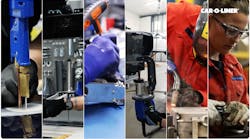American Honda published a new position statement on repair parts that says only original equipment parts should be used in the collision repair of any Honda or Acura vehicle.
Compromising any element of a collision energy absorption system or any part of the supplemental restraint system might have an adverse effect on occupant safety in subsequent collisions.
Here is the company’s unedited statement:
Honda and Acura vehicles are engineered and manufactured to exacting standards and as such, are designed to help protect vehicle occupants in the event of a collision.
All elements of a collision-energy absorption system including but not limited to any structural components such as bumper reinforcement bars, bumper energy absorbers, frames, rails, fender aprons A-pillars, B pillars, and body panels must work in concert to protect the vehicle occupants and maintain cabin integrity.
All elements of an occupant supplemental restraint system including but not limited to air bags, side-curtain air bags, and air bag deployment sensors must work in concert with energy absorption components to provide proper timing for air bag deployment.
Compromising any element of a collision energy absorption system or an occupant supplemental restraint system in the repair of a collision-damaged vehicle may have an adverse effect on occupant safety in any subsequent collision.
Therefore, American Honda does not support the use of aftermarket, alternative, reverse-engineered, or anything other than original equipment Honda or Acura parts for the collision repair of any Honda or Acura vehicle.
Further, American Honda does not support the use or re-use of structural components that have been removed and salvaged or recycled from an existing vehicle that has been previously damaged. Although the parts may appear equivalent, it may be difficult to tell if the part(s) have been previously replaced with a non-OE part, or if the part has received collateral damage as the result of a prior collision. Further, the part may have been subjected to severe weathering, rust, or other detrimental environmental exposure.

